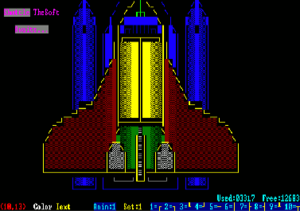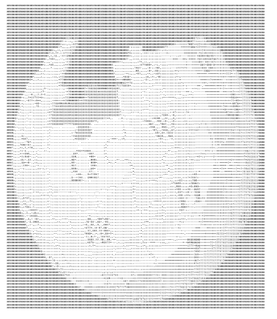
ASCII art is a graphic design technique that uses computers for presentation and consists of pictures pieced together from the 95 printable characters defined by the ASCII Standard from 1963 and ASCII compliant character sets with proprietary extended characters. The term is also loosely used to refer to text based visual art in general. ASCII art can be created with any text editor, and is often used with free-form languages. Most examples of ASCII art require a fixed-width font such as Courier for presentation.
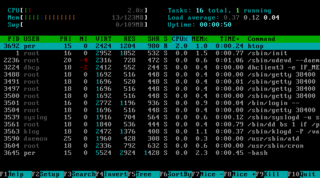
ANSI escape sequences are a standard for in-band signaling to control cursor location, color, font styling, and other options on video text terminals and terminal emulators. Certain sequences of bytes, most starting with an ASCII escape character and a bracket character, are embedded into text. The terminal interprets these sequences as commands, rather than text to display verbatim.

Newline is a control character or sequence of control characters in a character encoding specification that is used to signify the end of a line of text and the start of a new one. Some text editors set this special character when pressing the ↵ Enter key.
The computer art scene, or simply artscene, is the community interested and active in the creation of computer-based artwork.

Microsoft Paint is a simple raster graphics editor that has been included with all versions of Microsoft Windows. The program opens and saves files in Windows bitmap (BMP), JPEG, GIF, PNG, and single-page TIFF formats. The program can be in color mode or two-color black-and-white, but there is no grayscale mode. For its simplicity and that it is included with Windows, it rapidly became one of the most used applications in the early versions of Windows, introducing many to painting on a computer for the first time. It is still widely used for simple image manipulation tasks.

.nfo is a commonly used filename extension for text files that accompany various digital scene releases with information about them.
ACiD Productions (ACiD) is a digital art group. Founded in 1990, the group originally specialized in ANSI artwork for BBSes. More recently, they have extended their reach into other graphical media and computer software development. During the BBS-era, their biggest competitor was iCE Advertisements.
Christian Wirth, better known by the pseudonym RaD Man, is an American computer artist and historian. He works in the field of ANSI art, a method of creating art using a limited set of text characters and color escape codes based loosely on the relevant ANSI standard.
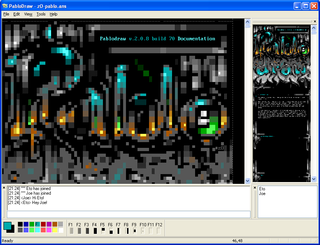
PabloDraw is a cross-platform text editor designed for creating ANSI and ASCII art, similar to that of its MS-DOS-based predecessors; ACiDDraw (1994) and TheDraw (1986).
FILE_ID.DIZ is a plain text file containing a brief content description of the archive in which it is included. It was originally used in archives distributed through bulletin board systems (BBS), and still in the warez scene.
ANSI art is a computer art form that was widely used at one time on bulletin board systems. It is similar to ASCII art, but constructed from a larger set of 256 letters, numbers, and symbols — all codes found in IBM code page 437, often referred to as extended ASCII and used in MS-DOS and Unix environments. ANSI art also contains special ANSI escape sequences that color text with the 16 foreground and 8 background colours offered by ANSI.SYS, an MS-DOS device driver loosely based upon the ANSI X3.64 standard for text terminals. Some ANSI artists take advantage of the cursor control sequences within ANSI X3.64 in order to create animations, commonly referred to as ANSImations. ANSI art and text files which incorporate ANSI codes carry the de facto.ANS file extension.
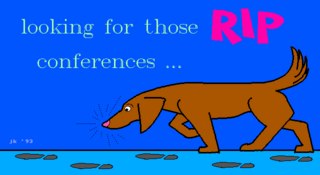
The Remote Imaging Protocol and its associated Remote Imaging Protocol Script language, RIPscrip, is a graphics language that provides a system for sending vector graphics over low-bandwidth links, notably modems. It was originally created by Jeff Reeder, Jim Bergman, and Mark Hayton of TeleGrafix Communications in Huntington Beach, California to enhance bulletin board systems and other applications.
Synchronet is a multiplatform BBS software package, with current ports for Microsoft Windows, Linux, and BSD variants. Past versions also ran on MS-DOS and OS/2, but support for those platforms were dropped in version 3.0.
ANSI.SYS is a device driver in the DOS family of operating systems that provides extra console functions through ANSI escape sequences. It is partially based upon a subset of the text terminal control standard proposed by the ANSI X3L2 Technical Committee on Codes and Character Sets.
Bush hid the facts is a common name for a bug present in some versions of Microsoft Windows, which causes text encoded in ASCII to be interpreted as if it were UTF-16LE, resulting in garbled text. When the string "Bush hid the facts", without newline or quotes, was put in a new Notepad document and saved, closed, and reopened, the nonsensical sequence of Chinese characters "畂桳栠摩琠敨映捡獴" would appear instead.
Game Editor is a 2D game authoring package. It supports multi-platform development to iPhone, iPad, Mac OS X, Windows, Android, Linux, Windows Mobile-based Smartphones, GP2X, Pocket PCs, and Handheld PCs. Compatibility with these platforms is mentioned on Game Discovery, a popular site for game developers, among other software like The 3D Gamemaker, DarkBASIC, and GameMaker.
Chasys Draw IES is a suite of applications including a layer-based raster graphics editor with animation, vista-style icon support and super-resolution via image stacking, a multi-threaded image file converter and a fast image viewer. The whole suite is Vista UAC aware and is designed to take advantage of multi-core processors.
Aces of ANSI Art was the first group of artists specifically organized for the purposes of creating and distributing ANSI art. The group was founded and operated by two BBS enthusiasts from California, "Zyphril" and "Chips Ahoy", from 1989 through 1991.
The IBM Personal Computer Basic, commonly shortened to IBM BASIC, is a programming language first released by IBM with the IBM Personal Computer, Model 5150 in 1981. IBM released four different versions of the Microsoft BASIC interpreter, licensed from Microsoft for the PC and PCjr. They are known as Cassette BASIC, Disk BASIC, Advanced BASIC (BASICA), and Cartridge BASIC. Versions of Disk BASIC and Advanced BASIC were included with IBM PC DOS up to PC DOS 4. In addition to the features of an ANSI standard BASIC, the IBM versions offered support for the graphics and sound hardware of the IBM PC line. Source code could be typed in with a full-screen editor, and very limited facilities were provided for rudimentary program debugging. IBM also released a version of the Microsoft BASIC compiler for the PC, concurrently with the release of PC DOS 1.10 in 1982.
